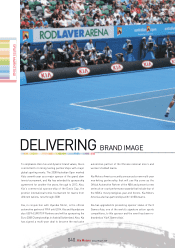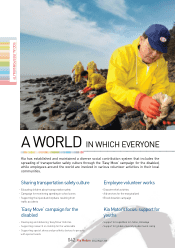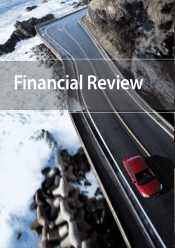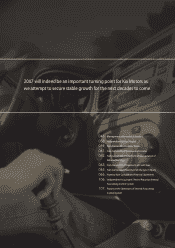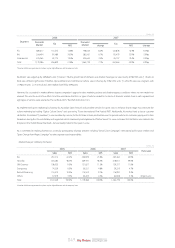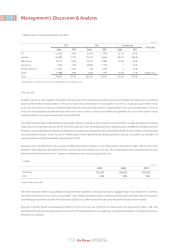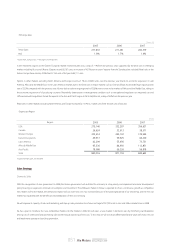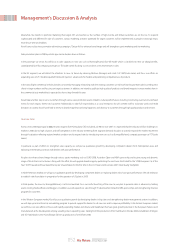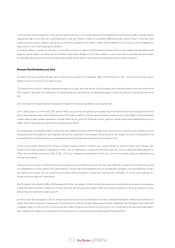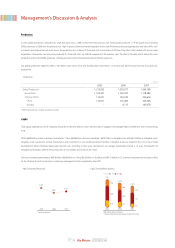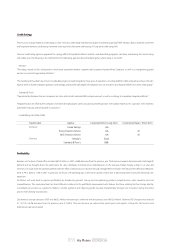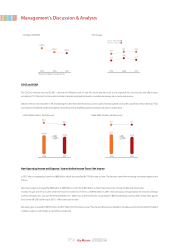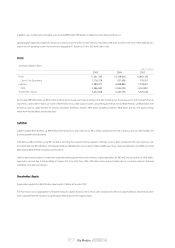Kia 2007 Annual Report Download - page 48
Download and view the complete annual report
Please find page 48 of the 2007 Kia annual report below. You can navigate through the pages in the report by either clicking on the pages listed below, or by using the keyword search tool below to find specific information within the annual report.
048_
Kia Motors Annual Report 2007
There are a number of automobile-related taxes in Korea. At the time of purchase, consumers need to pay a special consumption tax, education tax, VAT and
registration tax. Consumers also have to pay an acquisition tax and are required to buy government bonds. All car owners must pay automotive and education
taxes. At the same time, gasoline and diesel prices include four indirect taxes covering transportation, education, roads and VAT. In the wake of the Asian financial
crisis, some of these taxes were exempted or reduced in an attempt to boost domestic consumption, but more fuel-related taxes were imposed to raise funds for
education, to recoup local tax revenue lost from car taxes and to finance funds related to road traffic. In addition to this, automobile emissions are regulated to help
keep the air clean.
Automotive-related laws and regulations differ by country, but the overall trend is toward strengthening environmental and safety rules. In the United States, the
federal government sets the legally permissible levels of automobile emissions, and some states including California enforce their own additional emission
standards. Both the Tier II(Federal Regulations) and the LEV II(California’s Regulation) regulations began their phase-in from 2004, which are stricter than Tier I and
LEV I. The EU is also tightening its emission regulations. The Euro I emission standards were introduced in 1992 (in 1994 for diesel-powered vehicles) and the
tougher Euro IV standard went into effect in 2005. As for gasoline vehicles in the Euro IV standard, carbon monoxide emissions is tightened to less than one third,
hydrocarbons and nitrogen oxides is restricted to less than one fifth and particulate matter of diesel-powered vehicles is limited to one sixth of Euro I standard.
Along with these, many regulations to reduce green house gas emission and enhance car efficiency are implemented in the wake of global warming.
The 2007 new regulation can be summarized into realization and self-regulation in terms of tax and insurance and into reinforcement of environment and safety
standard. In 2007, registration tax and automotive tax of 7 to 10-seater passenger cars increased, insurance fees are degraded according to each model, and
discount rate of insurance fee will be self regulated in accordance with the period of accident-free driving. Therefore, burdens of customers toward taxes and
insurance fees will be increased or reduced according to cars and insurance companies. Meanwhile, environmental standards including emission standards will be
strengthened and pedestrian safety will be added to car safety test lists. All of these will put more burdens on the auto industry.
Sales Status
・2007 Sales Overview
Domestic Sales
Korea’s 2007 domestic car sales reached 1,262,739 units, a 7.1% increase (83,353 units↑) over 2006 despite a fewer release of new cars among Korea auto
manufacturers. It was possible thanks to aggressive sales strategies of imported cars and steady growth in the Korean market.
Sales in the passenger car market has increased by 8.5% (58,407 units↑) showing the highest growth rate, while 6.7%(17,657 units↑) in RV market and 3.2%(7,289
units↑) in the commercial vehicle market.
Management’s Discussion & Analysis
* Figures based on Shipment and Revenue
1,359,956
1,114,451
271,809
842,642
245,505
101,427
144,078
2007
1,258,851
1,140,734
269,575
871,159
118,117
115,009
3,108
2006 Change
8.0%
-2.3%
0.8%
-3.3%
107.8%
-11.8%
4535.7%
Sales Volume
Korea Plants
Domestic
Export
Overseas Plants
China
Slovakia
(Units, %)




